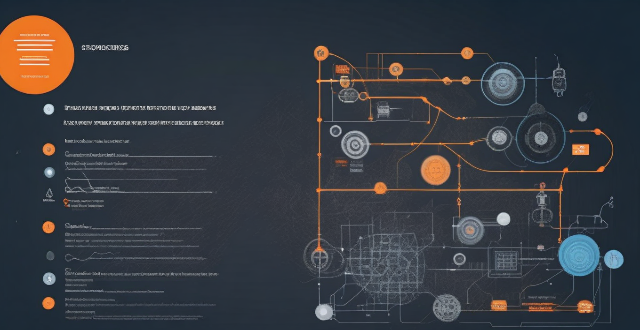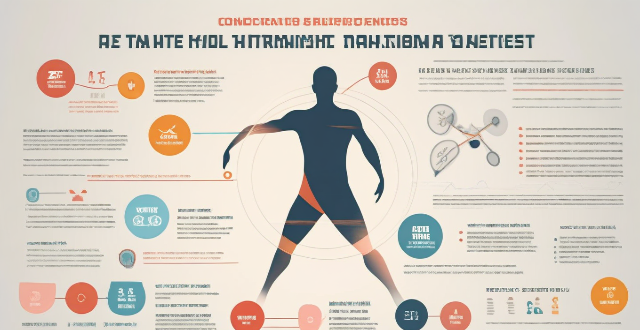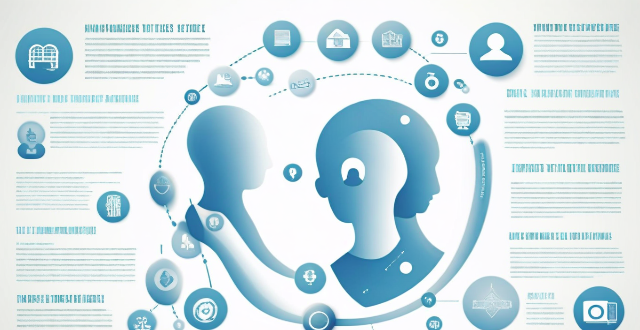Technology Game

What are some innovative ways that technology is being used in sports ?
Technology has significantly transformed various aspects of sports, including training methods, fan engagement, and game strategies. Key areas where technology is making a notable impact include virtual and augmented reality for both training and enhancing the fan experience, wearable technology for performance tracking and injury prevention, advanced analytics in player performance analysis and game strategy, video technology like instant replay and drone cameras for improved officiating and viewing experiences, eSports and gaming for interactive experiences and training simulations, social media and digital engagement for athlete interaction and live streaming, artificial intelligence in generating match highlights and aiding injury rehabilitation, and the Internet of Things in creating smart stadiums and monitoring equipment maintenance. These advancements not only improve performance but also enrich the overall sports experience for everyone involved.

How has technology changed the way we experience sports ?
Technology has revolutionized the way we experience sports, from enhanced viewing experiences to instant access to information, improved training and performance, and increased fan engagement and interaction. High-definition broadcasts, multi-angle replays, and interactive platforms have made watching sports more immersive. Live score updates and in-depth analysis provide fans with real-time information. Advanced analytics and wearable technology help teams and athletes optimize training and performance. Virtual reality and social media create a sense of community and foster discussions beyond the traditional boundaries of the stadium. Overall, technology continues to shape the future of sports in exciting new ways.

What are the key elements of educational game development ?
Educational game development involves defining learning objectives, understanding the target audience, designing engaging game mechanics and visuals, developing relevant content, implementing assessment and feedback mechanisms, conducting iterative testing, and collaborating with experts in the field. By addressing these key elements, developers can create effective educational games that support learning outcomes and enhance the overall player experience.

How can coaches use sports technology analysis to develop game strategies ?
Coaches can utilize sports technology analysis in numerous ways to develop game strategies. Key points include: 1. Data collection and analysis for player performance tracking and opponent research. 2. Utilizing video analysis software for tactical breakdowns and play design. 3. Conducting biomechanical assessments for injury prevention and performance optimization. 4. Implementing virtual reality (VR) training for simulated environments and skill development. 5. Using GPS and radio frequency identification (RFID) systems for movement analysis and load management. 6. Applying advanced statistics and analytics for deeper insights into performance and trend analysis. 7. Leveraging communication tools for instant feedback and strategy sharing. 8. Incorporating weather forecasting tools to adapt practices and prepare for game day conditions. 9. Employing recovery technology to monitor and enhance player recovery methods. 10. Integrating strength and conditioning apps for customized workouts and progress tracking. By incorporating these technological tools, coaches can make more informed decisions, improve player development, and gain a competitive edge during practices and games.

What is sports technology analysis ?
Sports technology analysis is a process of using advanced technologies to collect, analyze, and interpret data related to sports performance. The goal of sports technology analysis is to improve athletic performance, enhance coaching effectiveness, and optimize team management. Key areas of sports technology analysis include biomechanics, physiology, video analysis, wearable technology, and data analytics. By utilizing these tools and techniques, coaches can gain valuable insights into athletes' physical abilities, training methods, equipment usage, and game strategies. This leads to better overall performance and increased success in competitions. Sports technology analysis also enhances coaching effectiveness by providing coaches with detailed information about athletes' strengths and weaknesses, allowing them to develop more effective training programs that target specific areas for improvement. Additionally, sports technology analysis helps optimize team management by monitoring players' workloads and fitness levels through wearable technology and other tracking systems. Overall, sports technology analysis is a powerful tool that allows coaches to make more informed decisions about player development, game strategies, and team management.

In what ways do gamification and game-based learning foster innovative teaching environments ?
Gamification and game-based learning foster innovative teaching environments by engaging students with challenges and rewards, promoting collaboration and competition, providing immediate feedback and personalization, and enhancing student motivation and engagement. These methods use elements of games to motivate students and enhance their learning experience, making learning more fun, interactive, and enjoyable. By incorporating these approaches, educators can transform traditional classrooms into dynamic spaces where students actively participate in their own learning journey.

What are the current trends in educational game development ?
The text describes the current trends in educational game development. These trends include gamification, personalized learning, collaborative learning, real-world applications, and augmented reality (AR) and virtual reality (VR). Gamification involves incorporating game elements into non-game contexts, such as education. Personalized learning focuses on tailoring the learning experience to individual students' needs and preferences. Collaborative learning encourages students to work together towards a common goal. Real-world applications help students understand how the concepts they are learning can be applied in practical situations. Augmented reality (AR) and virtual reality (VR) technologies provide immersive experiences that enhance learning. These trends aim to make learning more engaging, personalized, collaborative, applicable, and immersive for students.

What programming languages are commonly used in educational game development ?
The text is about educational game development and the programming languages used. It lists some of the most commonly used programming languages in educational game development, including Python, JavaScript, Java, C#, UnityScript (C# variant), and HTML5/CSS3/JavaScript. The pros and cons of each language are discussed, along with examples of games that use them. The conclusion states that by choosing the right language for your project, you can ensure that your game is engaging, educational, and accessible to a wide audience.

What role does gamification play in educational game development ?
Gamification plays a crucial role in educational game development. It is the process of incorporating game elements into non-game contexts to make them more engaging and motivating for learners. In the realm of education, gamification can transform traditional learning experiences into interactive and enjoyable ones. This approach not only enhances student engagement but also fosters a positive learning environment. Key roles of gamification in educational game development include enhancing student engagement, providing immediate feedback, fostering competition and collaboration, encouraging self-directed learning, and incorporating relevant content. By leveraging these principles, educators can create effective learning experiences that are both enjoyable and impactful for students.

How can educational game developers ensure that their games are accessible to all learners, including those with disabilities ?
Educational game developers have the responsibility to ensure that their games are accessible to all learners, including those with disabilities. This can be achieved by understanding different types of disabilities and how they affect a person's ability to interact with educational games, implementing accessibility features such as text-to-speech, alternative controls, subtitles and audio descriptions, and customizable settings, and testing the game with users who have disabilities to identify potential barriers and refine the game based on feedback. By following these guidelines, developers can create educational games that are accessible to all learners, regardless of their abilities or disabilities.

What are the challenges faced by educational game developers in creating games that are both fun and educational ?
The text discusses the main challenges faced by educational game developers, including balancing education and entertainment, meeting educational standards, adapting to different learning styles, and engaging students long-term.

What is the status of the NBA All-Star game due to COVID-19 concerns ?
The NBA All-Star game was canceled in 2021 due to COVID-19 concerns. This decision had a significant impact on both players and fans, as they missed out on an exciting event. Alternative events were organized to provide some entertainment value, but they were not able to fully replace the excitement of the actual All-Star game. The future of the event remains uncertain, but changes may be made to better accommodate health and safety concerns moving forward.

How can athletes manage pre-game nerves and anxiety ?
Pre-game nerves and anxiety are common for athletes but can be managed through various strategies, including mindfulness techniques, physical preparation, mental strategies, support systems, and practice. These methods help athletes perform at their best by transforming nervous energy into focus and drive for success.

What innovations in sports technology can help prevent injuries ?
Innovations in sports technology have made it possible to prevent many sports injuries before they happen. Wearable technology, smart clothing, virtual reality training, strength and conditioning programs, and recovery techniques are all options available to help athletes stay safe and healthy while performing at their best. By embracing these technologies, coaches, trainers, and athletes can work together to create safer environments for sports competitions and training sessions.

How has sports technology analysis evolved over time ?
The evolution of sports technology analysis has transformed the way we understand and improve athletic performance. From manual methods to advanced analytics, wearable technology, and artificial intelligence, coaches and analysts now have access to more accurate and comprehensive data than ever before. This has allowed for more informed decision-making and optimized training programs, ultimately leading to better overall performance in sports.

How can educational game developers create engaging and interactive games without sacrificing educational content ?
Educational game developers can create engaging and interactive games without sacrificing educational content by focusing on clear objectives, gamification techniques, feedback mechanisms, collaborative features, and customization options. These key aspects can help developers create experiences that are both fun and educational for players of all ages.

What are the latest trends in basketball shoe design and technology ?
The latest trends in basketball shoe design and technology include the use of lightweight materials, energy return systems, customization options, sustainability initiatives, and smart technology integration. These advancements aim to enhance performance, style, and environmental consciousness while providing players with personalized footwear choices.

How can educational game developers measure the impact of their games on student learning outcomes ?
Educational game developers can measure the impact of their games on student learning outcomes through various methods, such as pre- and post-testing, surveys and feedback forms, observations and interviews, and comparative studies. These strategies allow developers to see if there has been any improvement in the students' knowledge or skills related to the game's content, gather information from students about their experience with the educational game, provide valuable insights into how well the game is working as an educational tool, and compare the learning outcomes of students who played the educational game with those who did not. By utilizing these methods, developers can gain valuable insights into how well their games are working as educational tools and make necessary adjustments to improve their effectiveness.

How has the use of wearable technology impacted sports data analysis ?
Wearable technology has revolutionized sports data analysis by enabling real-time performance monitoring, injury prevention, training optimization, and strategic decision-making. Athletes can receive immediate feedback on their performance metrics, while coaches can tailor training loads and develop game plans based on accurate data. Wearables also aid in injury prevention and recovery tracking. Fan engagement is enhanced through interactive experiences and broadcast enhancements. Future developments include advanced analytics and integration with other technologies. Overall, wearable technology has significantly transformed sports data analysis for the betterment of athletes' health, performance, and team strategies.

What role does technology play in the design of a sports stadium ?
Technology has revolutionized the design of sports stadiums, enhancing fan experience with interactive displays, mobile apps, and augmented reality. It also improves functionality and safety through advanced lighting systems, security cameras, and smart building management systems. As technology evolves, we can expect more innovative solutions that will further transform the way we enjoy sports events.

How has virtual reality technology been incorporated into sports equipment ?
The integration of virtual reality technology into sports equipment has revolutionized the way athletes train, perform, and recover from injuries. It also enhances fan engagement by providing unique perspectives of live sporting events. The main applications include simulation and training, performance analysis, rehabilitation and recovery, and fan engagement.

What role does technology play in modern education systems ?
The text discusses the role of technology in modern education systems, highlighting its ability to enhance accessibility, personalize learning experiences, improve collaboration and communication, refine assessment methods, and facilitate lifelong learning. It also acknowledges potential challenges such as the digital divide, overreliance on technology, and data privacy concerns. The conclusion emphasizes that while technology offers numerous opportunities for education enhancement, it should be integrated thoughtfully to avoid potential pitfalls.

In what ways do physical activities promote mental health and deter video game dependency ?
This topic summary delves into the intricate relationship between physical activities, mental health, and video game dependency. It emphasizes the role of physical activities in promoting mental well-being by boosting mood, enhancing cognitive functions, and providing social interaction. Conversely, it highlights how these activities can deter video game dependency by offering alternative forms of entertainment, setting boundaries for gaming time, and fulfilling achievement needs. The text underscores the importance of maintaining a balance between digital leisure and physical activities for overall mental health and well-being.

How does sports technology analysis help athletes improve their performance ?
Sports technology analysis is a crucial tool for athletes to enhance their performance by leveraging advanced technologies. It helps in data collection and analysis, video analysis, biomechanical analysis, virtual reality training, and recovery tracking. By collecting vast amounts of data through wearable devices, sensors, and cameras, athletes can track various metrics such as heart rate, speed, distance, and power output. Video analysis provides a visual representation of an athlete's performance, identifying technical errors or areas for improvement in their technique or strategy. Biomechanical analysis studies the mechanics of human movement to optimize athletic performance, using specialized equipment to analyze an athlete's movements. Virtual reality training simulates game scenarios and provides realistic training environments, allowing athletes to practice and refine their skills in a controlled setting. Recovery tracking monitors an athlete's physiological responses during recovery periods, ensuring that they are adequately rested and ready for competition or training sessions. Overall, sports technology analysis enables athletes to make data-driven decisions that lead to improved outcomes.

How can technology help in designing and monitoring a sports training plan ?
Technology has revolutionized sports training, allowingTechnology has revolutionized sports training, allowing workout programs through wearable devices allowing for more personalized and efficient workout programs through wearable devices, data analytics, and virtual training environments. It aids in designing training plans by collecting performance data, tracking movement patterns, simulating game scenarios, and customizing regimens based on individual needs. Technology also enhances monitoring progress with real-time feedback, recovery management tools, and adaptive goal setting features. These advancements provide valuable insights that traditional methods cannot match, shaping the way athletes reach their peak performance.

How has technology influenced women's empowerment and rights ?
The text discusses the impact of technology on women's empowerment and rights, highlighting various areas such as education, economic participation, health, social activism, and policy influence. It emphasizes how online learning platforms, e-commerce, telemedicine, social media, and digital security tools have transformed opportunities for women. Furthermore, it underscores the importance of leveraging technology to promote gender equality and women's rights globally.

How has technology improved accessibility and participation in sports for people with disabilities ?
The text discusses how technology has positively impacted accessibility and participation in sports for people with disabilities. It covers the development of assistive devices like wheelchairs and prosthetics, sensory aids such as audio description services and tactile signage, communication aids including sign language interpreters and assistive listening systems, and digital platforms that provide live streaming and social media interaction. The article also explores training tools like virtual reality and wearable technology, as well as accessibility features in sports venues. Overall, the text emphasizes how technology is breaking down barriers and promoting equality in sports for individuals with disabilities.